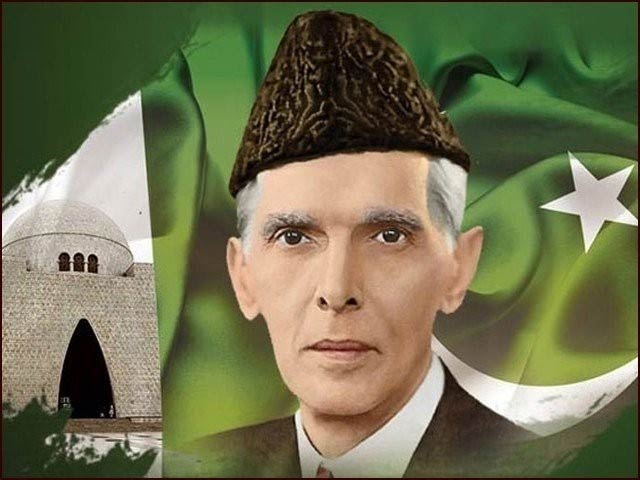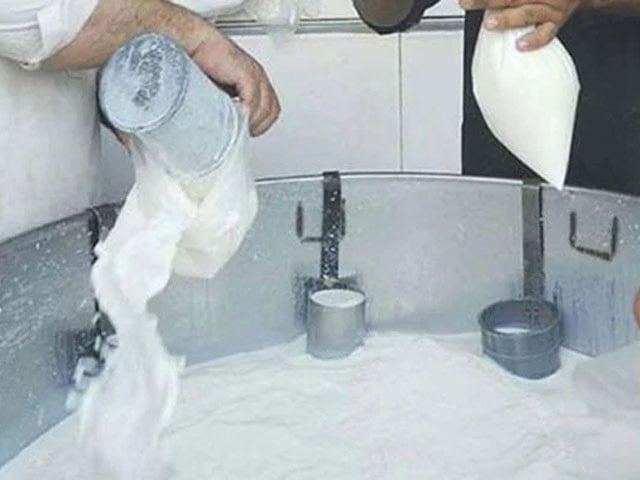After more than half a century has passed since the death of the founder of Pakistan, Quaid-e-Azam Muhammad Ali Jinnah, even today, not only the people, but also some educated sections generally express such concerns, on the basis of which there is a suspicion that the establishment of Pakistan After that, no special attention was paid to the illness and rehabilitation of Quaid-e-Azam Muhammad Ali Jinnah at the state level, due to which his health continued to decline and finally he died on 11 September 1948.
While these apprehensions are apparently the product of rumors, there is also evidence of the fact that the people of Pakistan have a deep understanding and love for their leader.
Apart from this, another reason is that Quaid-e-Azam not only always kept his illness and health situation a secret but also did not allow his public and national engagement to be suspended due to illness. Another thing to mention is that the people of our country do not have historical awareness and if they do, it is not written.
That is, they have never had access to the historical facts that are hidden in the books and documents regarding the illness of Quaid-e-Azam.
In such a case, there is a need to bring the above facts to the fore so that rumors and fears can be stopped. I have made an attempt to give a cursory review of these objective facts in my present article.
Quaid-e-Azam was 72 years old and died on 11 September 1948. After the establishment of Pakistan, he lived for about one year and 72 days. Biographers of Quaid-e-Azam believe that Quaid-e-Azam had been intermittently ill since 1934.
At that time he was about 58 years old, as if from 58 years to 72 years i.e. 14 years he had long and short attacks of various disorders, but he always kept himself determined to reach this goal which was on 14th August 1948. It was going to come out in the case of Pakistan.
Quaid-e-Azam left Quetta for rest on May 25, 1948, but his official and unofficial engagements continued there.
While replying to a letter from Mirza Abul Hasan Isfahani, Pakistan’s ambassador to the United States and leader of the Pakistan Movement, he wrote, “You are a disgrace to me.”
I had to work a bit more than usual and pay for it, but I assure you I have no complaints. I have benefited from some rest in Quetta.” On July 1, 1948, Quaid-e-Azam visited Karachi to inaugurate the State Bank of Pakistan.
On this occasion he looked very thin and sickly, and even staggered at one stage, but he controlled himself like a brave man. Although his health continued to deteriorate, he was still performing his duties. On July 7, 1948, he left for Quetta again and from Quetta he was transferred to Ziarat, which was a relatively cold and spacious valley compared to Quetta.
Controller (Audit Officer) of Ziarat Residency Balochistan Abdul Hamid has stated that when Quaid-e-Azam was leaving Ziarat for Quetta for the last time, he was brought down on a stretcher.
At the time of departure, he ordered to take me on a stretcher, taking care that no one saw me in this condition. When Quaid-e-Azam started to be seated in the car, he said, “Put me in the car in such a way that I can see my people.” When he left the pilgrimage by car, he killed his right hand and prayed to the people on both sides of the road. Hafiz was saying.
During his stay at the shrine, Quaid-e-Azam’s blood pressure had dropped significantly and his feet were swollen. His physician, Colonel Dr. Elahi Baksh, after the examination on September 9, expressed his disappointment about Quaid-e-Azam’s life to Ms. Fatima Jinnah.
On September 1, on the advice of doctors, Ms. Fatima Jinnah agreed to take Quaid-e-Azam to Karachi. On September 11, your plane landed at Maripur airport at 4:30 PM. Quaid-e-Azam was carried on a stretcher to Governor General House by ambulance.
At around nine o’clock in the night, your condition suddenly worsened again. When the doctors reached the Governor General House, Quaid-e-Azam was unconscious.
The pulse rate was also irregular. After the examination, the doctors administered the injection, but at 10:25 PM, Quaid-e-Azam’s spirit flew from the cage.
The Quaid-i-Azam wrote the last letter of his life to Beverley Nichols, a journalist and author of the book Verdict of India, on 3 September 1948, in which he said, “You will be glad to know that there is no serious matter with me.” . According to Beverley Nichols, the signature of Quaid-i-Azam in this letter was not frozen as before, but it was clear.
One thing must be said here and that is that the arrival of Quaid-i-Azam from Quetta to Karachi on September 11, 1948 was kept secret, due to which no one knew for whom an ambulance was being called at Maripur airport. In such a case, there was no question of any special arrangement for Quaid-i-Azam.
Various biographers have commented on the incident of the ambulance breaking down on its way from Maripur Airport to the Governor General’s House, but a certain section, however, sees the breakdown as an indication of state irresponsibility.
Undoubtedly, due to this defect, Quaid-e-Azam had to suffer an indescribable agony at the end, as recorded by Hector Bolaitho in the last chapter of his book. It is a different matter that there is some fiction in the statement of Hector Bolitho, due to which the actual facts have come under doubt.
Ms. Fatima Jinnah, who is an eye witness of this incident, also did not elaborate on the details of this incident in her book “My Brother”. Why they did this is a separate debate that has been raised by many essayists in the form of questions, but no clear evidence has yet emerged.
Mehmood Ali, a pro-United Pakistan Bengali leader, has recorded the details of this incident in an article published in the daily Dawn Karachi on September 18, 2004, but he has also talked more about the incident and expressed less opinion on the actual nature of the incident. , which has further strengthened the suspicion that a defunct ambulance was sent to Maripur Airport for Quaid-e-Azam as part of a conspiracy.
Unfortunately, all the responsibility for this tragedy has been given to the government of Pakistan’s first Prime Minister, Nawabzada Liaquat Ali Khan, while the facts say something else.
After the establishment of Pakistan, Syed Hashim Raza, the first deputy commissioner of Karachi, a well-known scholar and a friend of the Quaid-i-Azam, who was in charge of administrative affairs at that time, had told Raqim Al-Haruf in a meeting that those who were against Nawabzada Liaquat Ali Khan in this regard. When they accuse, they do so out of enmity.
Syed Hashim Raza said, “Although there was no exact knowledge of who was coming to the airport, despite the importance of the instructions, a better ambulance at Jinnah Hospital Karachi was dispatched to the airport. There is no truth in what has been said in this regard. “Colonel Saeed Ahmed, who was the Medical Superintendent of Jinnah Hospital at that time, also confirms Syed Hashim Raza’s statement.
This letter of Colonel Saeed was published in the daily Dawn Karachi on May 21, 1979, in which he wrote, “I was the medical superintendent of Jinnah Hospital at that time and the health of Quaid-e-Azam before or after the arrival of Quaid-e-Azam Muhammad Ali Jinnah in Karachi.” There was no information about the severity of the disorder.
The hospital received a message from Col. Geoffrey Knowles, Military Secretary to the Governor General, saying that an important person at his residence was arriving in Karachi this afternoon.
An ambulance should be dispatched. At that time, the hospital had two ambulances, one of which was in better condition and after proper care was dispatched as directed. “Unfortunately, it developed a mechanical problem on its way back from the airport, which resulted in a very frustrating situation.”
Governor General’s Military ADC Brigadier Noor Ahmad Hussain who was on duty in Quetta and Ziarat at that time compiled his memories regarding Quaid-i-Azam in his article published on September 11, 1981 in “The Muslim”. It has been written about that, “In Karachi in 1948, an ambulance in possibly the best condition was sent to the airport under the supervision of Quaid-e-Azam’s personal physician and the military secretary.”
As far as the absence of any protocol on Quaid-e-Azam’s arrival in Karachi is concerned, before Quaid-e-Azam’s departure from Quetta, Ms. Fatima Jinnah ordered me to immediately inform the Military Secretary to the Governor-General that he should visit Governor-General’s Karachi. Keep the arrival strictly secret and no government officials except the Governor’s personal staff come to the airport for reception.
Therefore, Ms. Fatima Jinnah’s orders were immediately conveyed to the Military Secretary. Stanley Wolpert, the biographer of Quaid-e-Azam, has also mentioned this situation in his book “Jinnah of Pakistan”, but he also could not provide any explanation. .
In the light of his study and the details mentioned in the article, Raqim Al Haruf has come to the conclusion that the decision to keep the Quaid-e-Azam’s arrival in Karachi a secret was the Quaid-e-Azam’s own, which was transferred by Ms. Fatima Jinnah to other relevant persons.
When Quaid-e-Azam was weakened by his long illness and physically weak, he also felt that no such situation should come before the nation regarding his personality that would lower his morale.
He knew that his nation, which he identified as the Pakistani nation, loved him immensely, so he wanted to save his nation from any severe depression.
He made the Muslims of the sub-continent who were a scattered mob into one nation by his longest struggle, so he could never like his nation to see him on the stretcher. He wanted to keep his last image in the eyes of the nation as a brave man. A picture of a brave man who laid down his life in the path of deep commitment to his nation and his country.
(function(d, s, id){
var js, fjs = d.getElementsByTagName(s)[0];
if (d.getElementById(id)) {return;}
js = d.createElement(s); js.id = id;
js.src = “//connect.facebook.net/en_US/sdk.js#xfbml=1&version=v2.3&appId=770767426360150”;
fjs.parentNode.insertBefore(js, fjs);
}(document, ‘script’, ‘facebook-jssdk’));
(function(d, s, id) {
var js, fjs = d.getElementsByTagName(s)[0];
if (d.getElementById(id)) return;
js = d.createElement(s); js.id = id;
js.src = “//connect.facebook.net/en_GB/sdk.js#xfbml=1&version=v2.7”;
fjs.parentNode.insertBefore(js, fjs);
}(document, ‘script’, ‘facebook-jssdk’));


